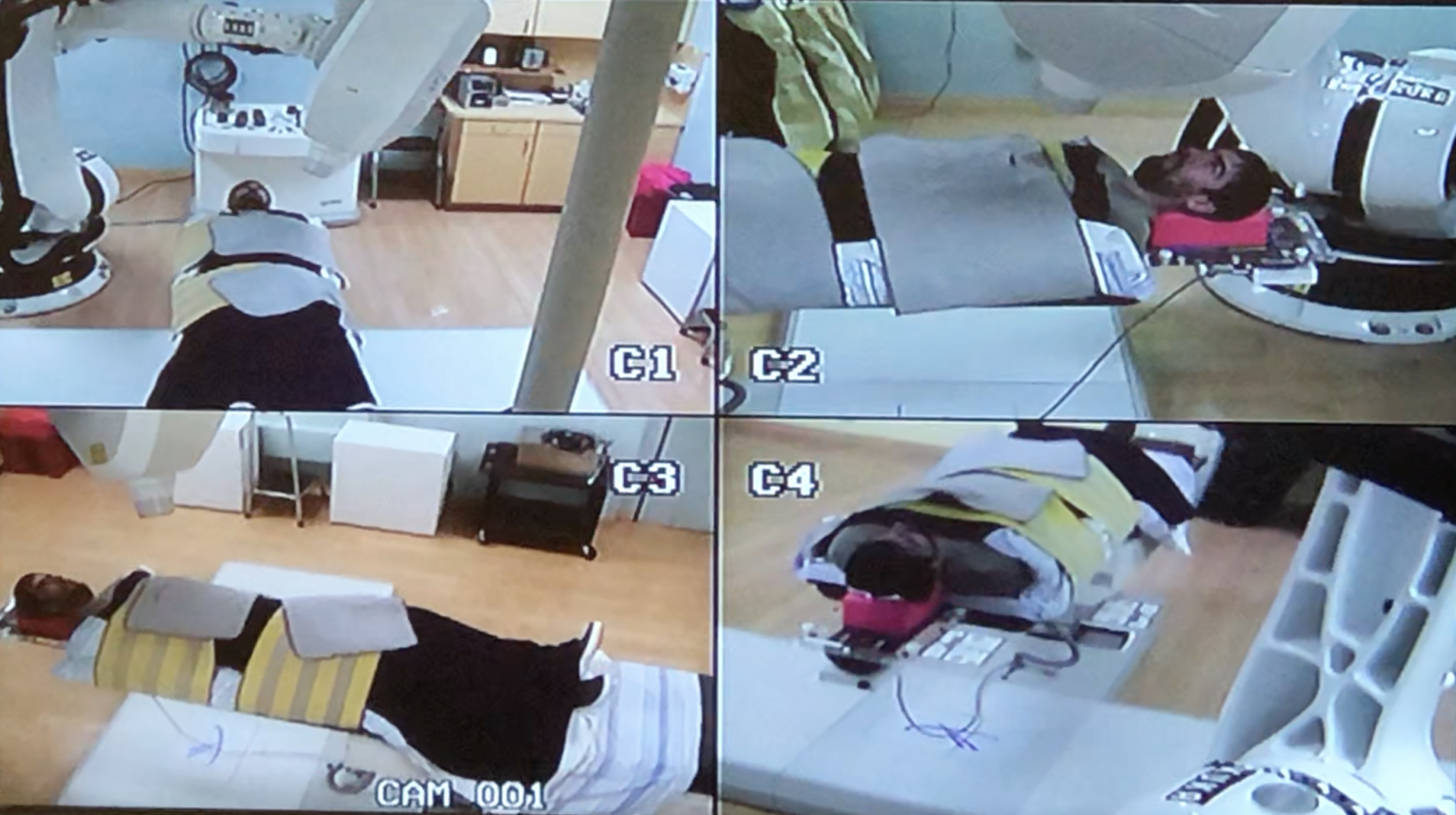A New Era in Radiotherapy: CyberKnife/Stereotactic Body Radiation Therapy (SBRT) “For some types of cancers that are inoperable or cannot be effectively treated with conventional radiotherapy, SBRT is a new chance for survival,” said Tarek Shouman, Head of Radiation Oncology at Egypt’s National Cancer Institute (NCI), which has been working with the IAEA for over 20 years.
Shouman and the team at NCI, in part through IAEA support, are now using SBRT to treat early lung cancer and recurrent head and neck cancer, as well as a type of liver cancer called hepatocellular carcinoma (HCC), the most common cancer among men.
Advances in imaging and treatment planning, for example, have made it possible for radiation oncologists to move from 2-D to 3-D radiotherapy techniques with relevant imaging and subsequent contouring (a process of taking images of and evaluating a tumor, defining where it ends and healthy tissue begins).
A rise in automated planning tools is also helping radiation oncology specialists harness computing power to pinpoint tumors and plan out exactly how much radiation to use on which part of the tumor and from which angles.
But precision in treatment can only go as far as the quality of diagnostic images and a radiotherapy machine’s capabilities.
Previous generations of diagnostic imaging were less detailed, and the capabilities of radiotherapy technology were more limited.
This meant that specialists were forced to use lower radiation doses over more sessions to keep patients safe, and sometimes depending on the patient’s condition, rule out radiotherapy as a treatment option altogether.
This has changed with the advent of tools and procedures such as
3-D brachytherapy and image-guided radiation therapy, which use detailed imaging to help dynamically guide and adjust radiation during treatment.
SBRT has also made it possible to provide highly precise treatment that delivers radiation from multiple directions and allows for significantly higher doses over shorter treatment times.
SBRT has taken control and precision to another level.
What makes it unique is its use of 4-D images — height, width, depth, and, in some sites, motion — to plan and deliver very precise beams of radiation at a tumor from different angles.
Each beam on its own has a lower radiation dose, which is safer and reduces the risk of side effects for normal tissue in its path.
When the beams converge at the tumor, they expose the cancer cells to a greater combined dose of radiation. This generally means fewer sessions are needed to effectively treat a patient.
For liver cancers like HCC, SBRT has radically improved radiation treatment options, Shouman explained.
Liver cancer is now the third most common cause of cancer deaths in the world.
For years, this form of cancer could not be effectively treated using radiation; conventional radiotherapy cannot safely deliver radiation doses high enough to treat a liver tumor because of risks to the surrounding healthy liver tissue.
With SBRT, even very small liver tumors can be treated with higher doses of radiation while preserving healthy tissue.
Studies have shown that SBRT can reduce the number of treatments for HCC as well as other cancers, such as brain, lung, and head and neck, from about 30 to 35 treatments to around one to five.
Over a two-year treatment period, SBRT has had success rates of 80 to 90% with certain cancers. This is similar to surgically removing a tumor, but poses fewer risks.
“SBRT is just one new approach in radiotherapy — the field is growing fast. We plan to continue working closely with the IAEA to help us stay at the forefront, while also expanding collaboration and support to other countries,” Shouman said. ~
CyberKnife is the most advanced radiosurgery technique available for the treatment of cancerous and non-cancerous lesions and tumors throughout the body.
Over the last two decades, the CyberKnife Center of Miami has treated thousands of patients with highly successful outcomes. This revolutionary treatment has helped save many lives while maintaining patients’ quality of life. That’s why we call it “The Beam of Life.”
What to Expect at CyberKnife Miami:
Radiation treatments can seem scary.
CyberKnife Miami is here to help prepare you and show you what to expect during treatment, easing your fears.
We want you to have a full understanding of the technology, the process, and the safety and effectiveness of CyberKnife treatments.
Thanks to our board-certified and highly experienced CyberKnife and Oncology team, you can feel confident that you’re in the most capable, and just as important, caring hands. Once you’re at our clinic, we’ll help you every step of the way, starting with preparing for treatment, offering support, and following up to see whether further treatments are necessary.
Call the CyberKnife Center of Miami for more info at (800) 204-0455 and go to our website to learn more about what to expect during, before and after treatment. Here’s the link:

